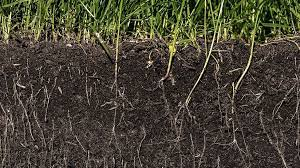Soil is a mixture of minerals, gas and water that covers much of the planet. It is also rich in organic matter that has been decomposed by living and dead plants. Plants and animals rely on soil for many reasons. Soil scientists are called pedologists. This article will give you some background information about soil. Let’s begin by defining what soil is. Then, learn about the different types of soil.

The largest particles in soil are sand and silt. The diameter of sand particles ranges from 0.05 to 2.0 mm. They are easily visible and feel like powder. Sand does not hold water very well, and silt and clay particles are only a few nanometers wide. They have very little water holding capacity. If you can picture what a piece of soil looks like, you can see it is made of a combination of these materials.
The components of soil react in fascinating ways. It is a dynamic natural resource that is vital for life on earth. There are some basic components of soil: minerals, organic matter, living organisms, and air. Each component reacts with one another and has unique properties. Soil is the backbone of terrestrial plant ecosystems but is easily damaged by pollution. For information on Contaminated Land Remediation, go to https://soilfix.co.uk
Typical soil contains a mixture of organic and inorganic matter. It is composed of dead plants and animals that help form the structure of the soil. It also provides plants with water and minerals. The types of soil differ according to their location and formation process. The process of soil formation is controlled by four factors: climate, parent material, vegetation, and organisms. This makes soil composition extremely complex. The right mix of soil is vital to the health of plants.

The next basic component of soil is organic matter. Organic matter is made up of dead plants and animals that recycle nutrients. In addition, humus stores nutrients for plants, making it easier to work. Water and air may make up half the volume of soil. Air is present in the tiny spaces between soil particles, which is why plants need oxygen to grow.
In addition to minerals, soil is also rich in microorganisms. The microorganisms present in soil are so numerous that one thimble of topsoil may contain as many as 20,000 of them. Earthworms, nematodes, and fungi are among the larger microbial organisms. The smallest ones are bacteria and actinomycetes, which are also called algae. Among the primary decomposers, these organisms consume water and air in order to break down organic matter into nutrients that plants need for proper growth.


